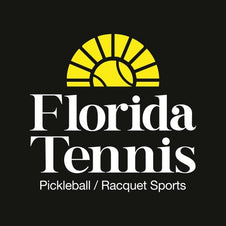Padel in the U.S.: From Trend to Tipping Point
Jul 25, 2025
It’s official: padel has outgrown the label of “emerging sport” in the United States. According to the newly released U.S. Padel Report—a joint project by Syracuse University’s Newhouse School and Padel 22. The racquet sport beloved across Europe and Latin America is now experiencing meaningful nationwide momentum in the U.S.
What began with a handful of private courts clustered in Miami and Los Angeles has expanded to more than 600 courts across 121 locations, with demand outpacing infrastructure in almost every region.
From Coasts to the Country
The sport’s footprint is no longer confined to early-adopter hotspots. Florida, Texas, California, New York, and New Jersey led the way in court growth in 2023, but Arizona, Colorado, Illinois, and Georgia are all highlighted as “emerging states to watch.”
Much of the expansion is driven by private investment, over 50 companies have entered the U.S. padel space in the last two years alone, but the report is clear: padel’s rise is now as much cultural as it is commercial.
“It’s increasingly part of the cultural and sporting DNA of the United States—and no longer confined to the coastlines.”
— Ben Nichols, Founder, Padel 22
Infrastructure Lags Behind Demand
The sport’s biggest challenge is also its biggest opportunity. Court construction remains the primary bottleneck, with zoning, permitting, and capital costs slowing down rollouts in many states. According to the report, the average cost of a padel court in the U.S. ranges from $60,000 to $80,000—not including land or operating costs.
Despite these barriers, projections are optimistic: the report estimates that between 10,000 and 12,000 courts and up to 15 million players could be active in the U.S. by 2030.
“We are planning to get somewhere between 10,000–12,000 courts by the end of the decade and somewhere between 12–15 million players.”
— Marcos Del Pilar, former USPA President
Participation Leads the Way
While padel remains lesser-known than sports like pickleball, it’s gaining traction fast—especially among younger players, female athletes, and international communities. The average U.S. padel club now reports up to 1,000 unique players monthly, with the majority of growth attributed to organic word-of-mouth.
Operators are finding success by offering more than just courts—social events, youth leagues, and creative programming are helping drive retention.
“The sport has grown without a roadmap, and the USPA is here to help provide one. That is our role in this story.”
— Bill Ullman, President, USPA
Pickleball and Padel: Not Either/Or
Rather than competing, the report finds the two sports are increasingly co-existing. In fact, 30% of U.S. pickleball venues now include padel courts, up from just 5% a year ago. This trend supports a more flexible, multi-sport facility model, particularly in suburban and mixed-use developments.
From Visibility to Viability
With over 2.5 million Americans now engaging with padel content on social media, visibility is rising fast. But the report emphasises that sustained success depends on building physical access, structured opportunities, and grassroots culture.
“We need this to be a college sport, develop the next generation of champions, create scholarship opportunities, and encourage kids to go to school and to play padel.”
— Andi Neugarten, Founder, 6 Love Sports
What Comes Next
The takeaway from the U.S. Padel Report is clear. While still early in its journey, padel in the United States has moved beyond novelty. It’s gaining structure, fanbase, and financial backing—all essential ingredients for a lasting presence.
For players, investors, operators, and fans, the message is simple: padel is no longer just coming, it’s here.

